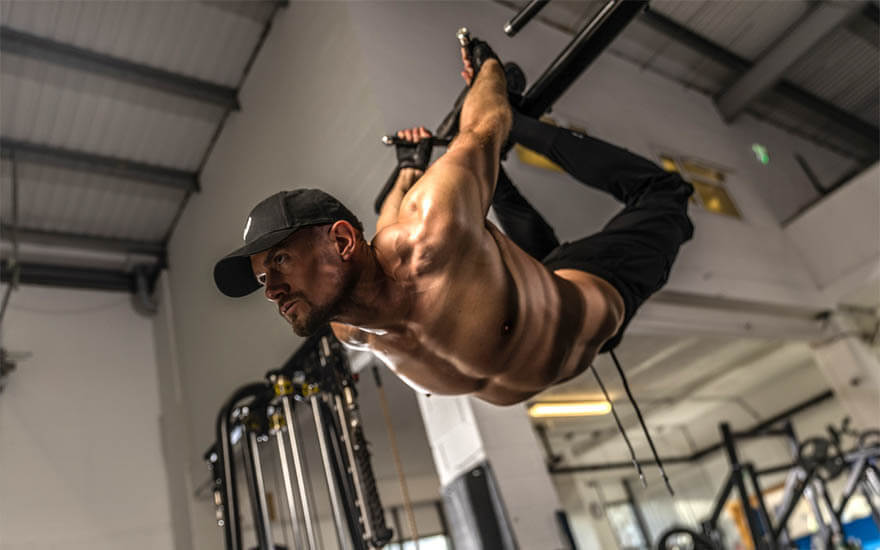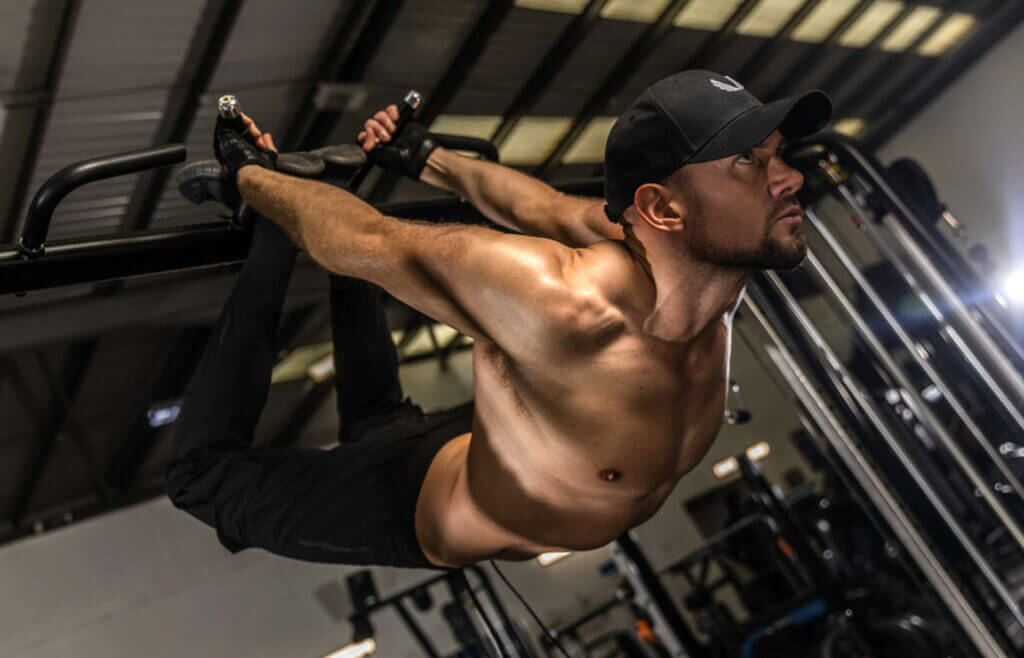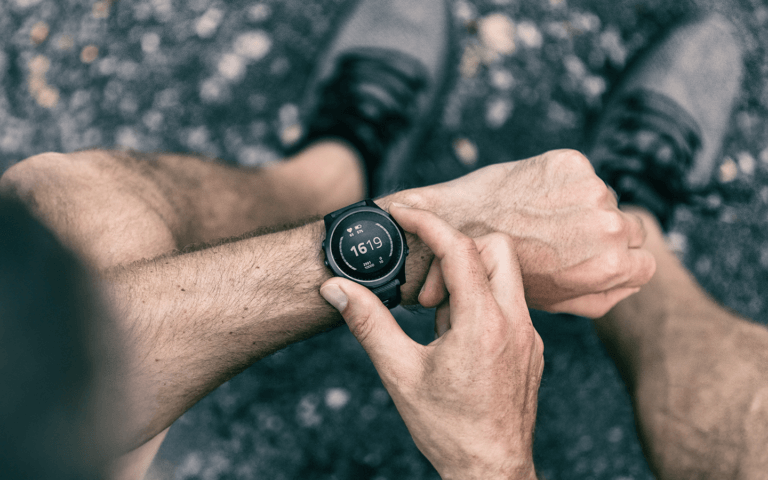Author: Marc Bartlett
Photography By Simon Howard
The ‘static freefall’ places the body in a very similar position to that of the skydiving freefall
Its benefits are extensive since it first recruits your core muscles and hip flexors, accentuating your shoulder mobility and flexibility as your knees pass through the arms. Finally, it becomes a deep stretch of your shoulders, pectorals, core and hip flexors.

HOW TO PERFORM THE FREEFALL
- It all begins with a hybrid of the pull-up and hanging knee raise. A powerful two-inch pull-up jolt instigates the upward momentum, while a simultaneous knee raise ignites backward rotational force. This combination effortlessly allows your legs the momentum needed to surpass head height and travel your knees through your arms.
- As your knees travel backward, anchor your feet or toes to the upper bar, stopping you from traveling all the way around 360 degrees – an advanced variant and more demanding technique.
- Once your feet are anchored, straighten your body so that your knees and shoulders align; this will emphasize a combination of glute engagement and hip flexor stretch, creating a crescent.
- Keeping a tight grip on the bar, allow your shoulders, chest and core to join your hip flexors in their full range of motion. Hold. Now unravel slowly back into the original hanging position.
- Take a break and repeat. Alternatively, if you’re feeling brave, go straight into the second rep without letting go or losing your abdominal engagement. Ravel, stretch, unravel, repeat.
THE GOAL
The freefall aims to increase your range of motion in the stretched-out position and to increase the duration each time you perform the static hold. This move requires excellent hand grip strength as you don’t want to let go when you’re up there.
Preparing for the static freefall
In preparation for attempting this impressive gravity-defying feat of flexibility, think about developing strength and mobility in these key areas:
Develop your hand grip strength by practicing a simple vertical hang from a pull-up bar, increasing the time you can hold this basic position. Add a knee raise isometric hold, and you’re already growing the required next-level hip flexor strength. Work on a mat to train your lower abs through reverse crunches.
From a mobility perspective, shoulder flexibility is key. Practice static stretches taking the arms and shoulders through all planes of movement. Also, incorporate forwards and backward arm windmills into your mobility preparation, adding light hand weights to the windmills as you develop your strength. Create as large a circle with your hands as possible so that your shoulders develop the maximum range. Chest stretches should also be performed to elongate pectorals muscle fibers.
These preparatory training practices should develop the primary proficiencies needed to build the strength required to safely go into the static freefall while maximizing its many benefits.
When you first attempt the complete movement, make sure, above all else, that you are confident in your grip strength and shoulder mobility. And hang tight no matter what; you’re at altitude.
THE BENEFITS
Aside from other gymgoers postulating that you may be Batman IRL, the benefits of this movement pattern are endless. The static freefall pretty much recruits every muscle from the waist up.
You hit sections of the anterior and posterior chain with every rep by maintaining control and a steady speed during both the ravel and unravel. It’s also great for developing the strength and pliability of your connective tissue, as it’s a compound exercise taking you through a range of strenuous postures.
Performing the static freefall correctly will advance any athlete, particularly martial artists, gymnasts, and calisthenics enthusiasts, as it allows for simultaneous strength, flexibility, and mobility training. Aspiring masters of grappling martial arts such as BJJ need this move in their life, as the practitioner can increase the range at which they are comfortable in contorted positions and simultaneously develop the strength required to resist manipulations of the shoulder joint.






